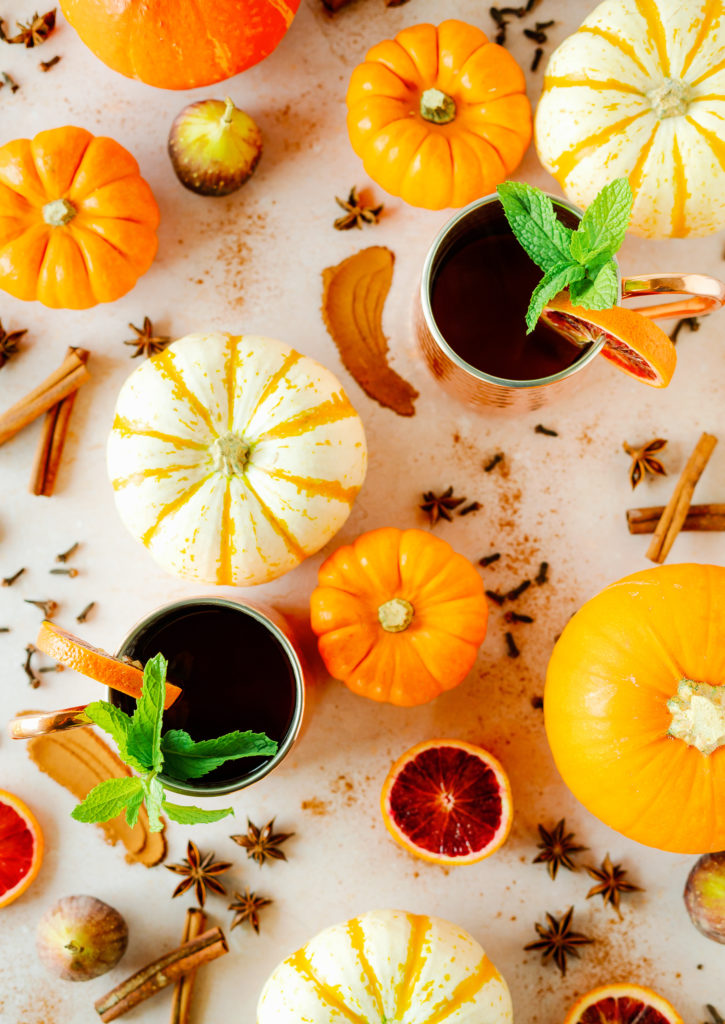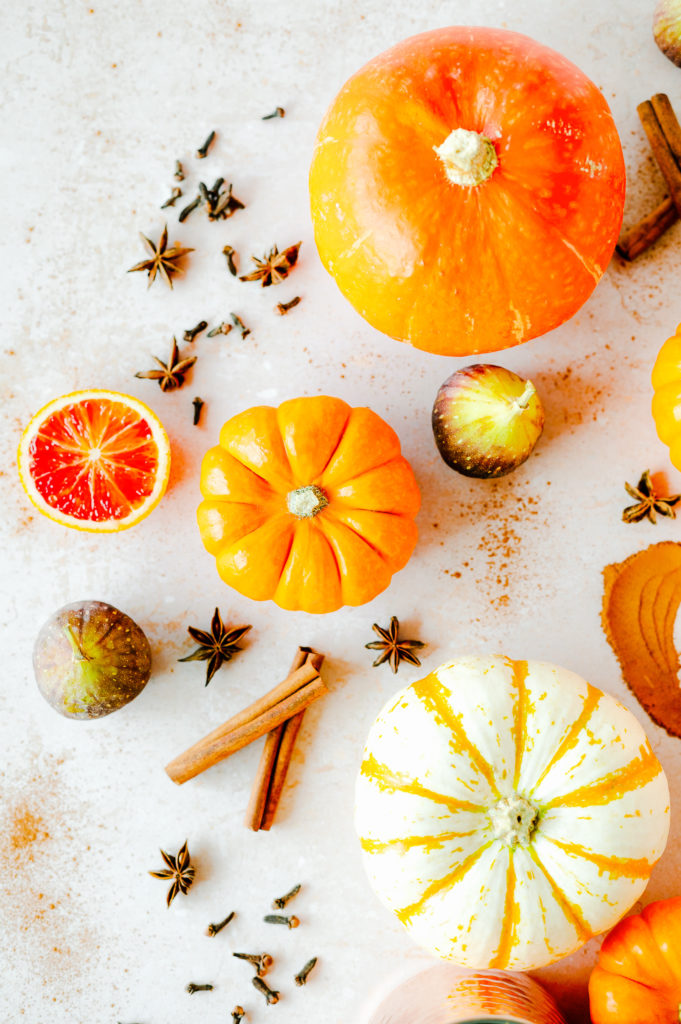Disclosure: This post is inspired, in part, by the recent online Gluten Free Expo, sponsored by the Gluten Intolerance Group and presented by the Nourished Festivals. I was not asked to write a blog post–and per usual, everything in here is mine (thoughts, opinions, ideas).

I can’t wait to see my family for Thanksgiving and many of my friends are just as excited for Hanukkah, Christmas, and all of the other winter celebrations. The first year we had our annual family Thanksgiving extravaganza after I stopped eating meat, my parents were very concerned that I was somehow going to starve during the week I spent at home. I love them for stocking up on all of the frozen veggie burgers and such, but it really wasn’t necessary (I was perfectly happy to gorge myself on the mashed potatoes, corn, green beans, turkey-free “stuffing,” cranberry sauce, green salad, and other meat-free items). Eventually they got used to the idea that I didn’t need special pretend-meat items for every meal. I’m lucky this isn’t a food allergy, and that the majority of the world is pretty easy to navigate as a vegetarian.
Later on in life, my Bonus Mom (that’s Dad’s wife, they got married long after us kids moved out of the house, so “Stepmother” sounds weird and also she’s not some meanie from a fairy tale) had to follow a low-FODMAP diet one year due to a health issue. We were all pretty baffled, as we found out at the last minute and didn’t have time to adjust our plans. When we asked her what was on the “no list,” she was frustrated and baffled herself, as it was a new-to-her situation.
What is a Food Allergy?
Let’s start at the beginning: a food allergy is not a personal choice. When a person with a food allergy eats that food, their immune system kicks up a fuss. The body produces extra histamines–the chemicals that cause inflammation–as they go on attack. The results might be itching, hives, or a rash; side-effects can include constipation or diarrhea or vomiting; severe side effects might include swelling of the throat (cutting off the ability to breathe) or an anaphylactic reaction–a severe, life-threatening condition that requires immediate medical attention. The symptoms might last a few hours or a few days.
Even a very small amount of an allergen can cause serious, life-threatening reactions in some people. A food allergy is very different from a personal preference (a la “I went gluten-free because [celebrity name here] told me it was the best”). Not that I’m saying you should ignore a guest’s food preferences, but an allergy is not the same as choosing not to eat something!
Food allergies are common! About 5% of all adults in the U.S. have a food allergy. Food allergies are more common in children. Since you can’t see a food allergy, your guest might not have an obvious need for accommodation. If you don’t ask, you won’t know. If you’re a guest, remember that–it’s important to let people know!
Know the Top Eight. The top food allergens are: cow milk/dairy, eggs, tree nuts (including but not limited to walnuts, pine nuts, cashews, pistachios, almonds, Brazil nuts), peanuts (which are legumes and not tree nuts), shellfish, wheat (including but not limited to gluten, a component of wheat), soy, and fish.
Be a Gracious and Communicative Guest
If you have a food allergy or other dietary limitation, or another allergy, please tell your hosts! Be clear about what your limitations are and how they can be accommodated. For example, most people do not know that “gluten free” is not the same as “safe for people with Celiac disease.” They don’t know they can’t use the same knife on the gluten-free pizza that they used on the wheat-pizza.

Teach people how to feed you. If you can, make up your own “guide to safely feeding me,” with bullet points of tips and lists of “safe for me” foods. Offer it as a way to help your host learn, and make it clear you’re not demanding all food in the house follow “your” rules. Definitely include a definition of your allergy and how serious it is (will you sniffle, or is there a chance you’ll die?). You might include a link to your favorite medical website that addresses your allergy, a favorite food blogger.
Help keep yourself fed. The typical advice is to offer to bring a dish you know you can eat to the meal. I’m writing this in the context of allergies, but as a vegetarian I’m always bringing something substantial to ensure I get fed. If it’s appropriate, offer up a dish! Of course I’ve also packed emergency food in my suitcase (just in case).
Have an allergic-reaction plan and share it. This seems like a no-brainer, but if you have a plan and have not shared it, in the event you become incapacitated no one else will know what to do! If you have an epi-pen in your purse/pocket at all times that’s great, but someone else needs to know when to use it.
Be a Warm and Safe Host
Ask your guests about allergies. You don’t want to accidentally poison your guests! Find out what they allergy is, and ask how severe it is. Do they need the allergen to stay 6′ away from them? Or just not in their food. One of my parents’ friends was allergic to eggs. While visiting a friend in the hospital he was there long enough to need to eat a meal. In the cafeteria, he asked for a grilled cheese sandwich–no eggs in that, right? When he ate the sandwich, he went into anaphylactic shock. Why? The grill had eggs on it earlier in the day, and while the grill was scraped down/wiped down in standard restaurant practice, that’s not good enough to prevent cross-contamination. (He was in a hospital, so got prompt medical attention, and lived many more years.) ASK QUESTIONS. A guest with food allergies will appreciate you trying to accommodate them!

Ask your guests for tips and suggestions. Maybe they have a favorite recipe, meal suggestion, online resource, or other pointer for you. Again, ASK QUESTIONS.
Educate yourself about best practices. This is super important if your guest has a serious food allergy (one that might kill them) or has Celiac disease. For example, you should assume that any kitchen implement that is porous–made of wood, stone, cast iron, etc.–is NOT safe to use on the allergen you’re trying to avoid. Assume your best bet is to use a fresh/clean pan for the allergen-free dishes (one that hasn’t just been used to cook something with the allergen in it). Head over to Laulima Kitchen for up-to-date information about a Celiac-safe kitchen (and grab her “10 Ways to Keep Your Kitchen Celiac Safe” while you are there).
Include allergy-friendly dishes. In most cases this isn’t that hard to do. I once made dinner for a group that included vegans (so no meat, dairy, eggs, honey in those dishes) as well as different people with allergies to potatoes, chicken, onions, and bell pepper. I wrote out my plan on paper to make sure I had enough options for everyone, and it wasn’t nearly as difficult as I’d imagined–I made two crock pot dishes and a soup, and served the meal with an appetizer cheese and veggie tray, bread, salad, store-bought hummus, and fresh fruit for dessert.
Learn about local allergy-friendly restaurants. Local bloggers are often your best bet for finding a safe place to eat a meal out, and this is especially true for those with Celiac disease. If you’re not sure about your favorite, call them up and ask. Do they have items on the menu that might be appropriate? What about kitchen prep? (If your guest has Celiac, potatoes cooked in a shared fryer–one where a wheat-batter-coated onion rings once fried–eating those potatoes can make them sick for a few days. Yuck.)
Don’t Forget the Non-Food Allergies!
While this post has focused on food allergens, there are plenty of people who are allergic to other things. Just like food allergens, non-food allergens can send the immune system into overdrive and produce symptoms from mild (runny nose, slightly itchy eyes) to the severe and life-threatening (anaphylaxsis).
Indoors: Pets and Pests and More, Oh My! The top non-food allergens inside your home include pets (cats, dogs, and others!), pests (dust mites, cockroaches), latex, pollen, mold, medications, perfume/fragrance (including essential oils), and medication. The number one thing you can do to help your guests with allergies is to deep-clean everything; rugs, carpets, drapes, and bedding can all harbor pet hair and pet dander, pests, pollen, and more. Mom used to choke when the air had strong fragrances and perfumes, as it exacerbated her asthma. (Not really an allergy, but equally unpleasant.) Hot tips indoors:
- Steam clean carpeting and rugs
- Wash drapes and bedding in hot water and dry thoroughly
- Avoid scented laundry detergent and soaps for bedding and towels (I use Dropps unscented)
- Dust using a microfiber cloth
- Avoid using heavily-scented cleaning products (or air out the house after cleaning)
- Avoid air fresheners, including essential oil diffusers
- Stock your medicine chest with an over-the-counter allergy medication
- If you live in a moist climate, run a dehumidifier and ensure air circulation in closets and around furniture to avoid mold growth (I live in Oregon–this IS a thing)
- Groom your pet (a bath and a brushing go a long way to remove both dander and other items that may get trapped in pet hair/fur)
If your guest has a pet allergy, find out well in advance how severe the allergy is. I have a cat, and I have many friends with cat allergies. Some of my friends are fine staying in my house for a weekend as long as they have an over-the-counter allergy tablet; others are so allergic that they will break out in hives if the cat rubs against them. You might be able to keep your pet and your guest separated if they have a mild allergy, but for a more serious allergy your guest might be better off in a hotel.
Outdoors. The nice part about outdoor allergies in the winter is that they tend to be less of a problem, at least in places like Michigan where the air turns crispy and everything gets covered in snow. (If you’re out in the Pacific Northwest, mold allergies can still be ugly in the winter.) Top outdoor allergens include pets (hey, dogs go outdoors!), insect stings, and pollens. Insect allergens include biting (mosquito, horse fly) and stinging (wasp, bee, yellow jacket, fire ants) insects. Pollens from trees, flowers, and grasses can cause misery almost all year long. Hot tips:
- Pollen can be problematic almost all year: tree pollen is most common in spring, weed pollen in summer and fall, and grass pollen in summer. If your guest is very allergic, it’s nice to move some of the party indoors.
- To avoid attracting insects–you may attract them, but they can bite/sting who they choose–don’t wear perfume/cologne or use heavily scented products for outdoor events.
- Have bug repellant products on hand for outdoor gatherings
- Consider careful use of bug repellant products (such as candles, sprays, bug zappers, and sonic products) to keep pests away from your gathering.
- In addition to an over-the-counter allergy tablet, add topical anti-inflammatory and anti-itch products to your medicine cabinet

Got Tips?
What are your best pointers for hosting an allergy-friendly meal?
What are the best things you can do for a guest with allergies in your home to make them feel comfortable?





